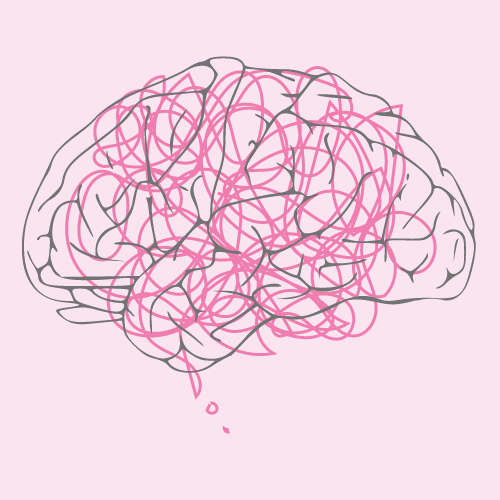Attention deficit hyperactivity disorder (ADHD) is a condition that affects people’s behaviour. I was diagnosed with ADHD at age 48! There was no such thing when I was growing up and the diagnosis helped me see a lot of how my ‘inner child’ suffered because of it.
People with ADHD can seem restless, may have trouble concentrating and may act on impulse and may also have additional problems, such as sleep and anxiety disorders.

Prescriptions information indicates that 8.2% of people who have ADHD are in receipt of ADHD medication. Research suggests between 55% and 62% of individuals who have an ADHD diagnosis are in receipt of ADHD medication. 8.2% have medication therefore suggests an Assessed percentage of around 15% and an undiagnosed percentage of 85%. As it is an extrapolation, we prefer to err on the side of caution and say “Over 80% undiagnosed” and “Over 2 million undiagnosed” (ADHDUK).
Most cases are diagnosed when children are under 12 years old. Many children go through phases where they’re restless or inattentive. This does not necessarily mean they have ADHD.
Sometimes ADHD was not recognised when someone was a child, and they are diagnosed later as an adult.
The following are types of symptoms:
- Inattention means a person may have difficulty staying on task, sustaining focus, and staying organised, and these problems are not due to defiance or lack of comprehension. They may:
- Overlook or miss details and make seemingly careless mistakes in schoolwork, at work, or during other activities
- Have difficulty sustaining attention during play or tasks, such as conversations, lectures, or lengthy reading
- Not seem to listen when spoken to directly
- Find it hard to follow through on instructions or finish schoolwork, chores, or duties in the workplace, or may start tasks but lose focus and get easily sidetracked
- Have difficulty organizing tasks and activities, doing tasks in sequence, keeping materials and belongings in order, managing time, and meeting deadlines
- Avoid tasks that require sustained mental effort, such as homework, or for teens and older adults, preparing reports, completing forms, or reviewing lengthy papers
- Lose things necessary for tasks or activities, such as school supplies, pencils, books, tools, wallets, keys, paperwork, eyeglasses, and cell phones
- Be easily distracted by unrelated thoughts or stimuli
- Be forgetful in daily activities, such as chores, errands, returning calls, and keeping appointments
- Hyperactivity means a person may seem to move about constantly, including in situations when it is not appropriate, or excessively fidgets, taps, or talks. In adults, hyperactivity may mean extreme restlessness or talking too much.
- Impulsivity means a person may act without thinking or have difficulty with self-control. Impulsivity could also include a desire for immediate rewards or the inability to delay gratification. An impulsive person may interrupt others or make important decisions without considering long-term consequences.
- They may:
- Fidget and squirm while seated
- Leave their seats in situations when staying seated is expected, such as in the classroom or the office
- Run, dash around, or climb at inappropriate times or, in teens and adults, often feel restless
- Be unable to play or engage in hobbies quietly
- Be constantly in motion or on the go, or act as if driven by a motor
- Talk excessively
- Answer questions before they are fully asked, finish other people’s sentences, or speak without waiting for a turn in a conversation
- Have difficulty waiting one’s turn
- Interrupt or intrude on others, for example in conversations, games, or activities
Presentation:
There is a persistent thought from some parts of the general population that ADHD requires some form of hyper-activity. This is not the case. Based on the above criteria there are three kinds (presentations) of ADHD that can occur. Because symptoms can change over time, the presentation may change over time as well
Combined Presentation (50-75%): if enough symptoms of both criteria inattention and hyperactivity-impulsivity were present for the past 6 months
Predominantly Inattentive Presentation (20%-30%: if enough symptoms of inattention, but not hyperactivity-impulsivity, were present for the past six months
Predominantly Hyperactive-Impulsive Presentation (15%): if enough symptoms of hyperactivity-impulsivity, but not inattention, were present for the past six months.
Adults with ADHD
Adults with ADHD may find they have problems with:
- organisation and time management
- following instructions
- focusing and completing tasks
- coping with stress
- feeling restless or impatient
- impulsiveness and risk taking
Some adults may also have issues with relationships or social interaction.
How is attention deficit hyperactivity disorder (ADHD) is treated
For children with ADHD, it can be managed with appropriate educational support, advice and support for parents and affected children, alongside medicine, if necessary.
For adults with ADHD, medicine is often the first treatment offered, although psychological therapies such as cognitive behavioural therapy (CBT) may also help.
Medicines for ADHD
Stimulants. The most common type of medication used for treating ADHD is called a “stimulant.” Although it may seem unusual to treat ADHD with a medication that is considered a stimulant, it works by increasing the brain chemicals dopamine and norepinephrine, which play essential roles in thinking and attention.
Under medical supervision, stimulant medications are considered safe. However, like all medications, they can have side effects, especially when misused or taken in excess of the prescribed dose, and require an individual’s health care provider to monitor how they may be reacting to the medication.
Non-stimulants. A few other ADHD medications are non-stimulants. These medications take longer to start working than stimulants, but can also improve focus, attention, and impulsivity in a person with ADHD. Doctors may prescribe a non-stimulant: when a person has bothersome side effects from stimulants, when a stimulant was not effective, or in combination with a stimulant to increase effectiveness.
Psychotherapy and psychosocial interventions
Several specific psychosocial interventions have been shown to help individuals with ADHD and their families manage symptoms and improve everyday functioning.
How the impact of ADHD changes with age
The impact of ADHD differs with age reflecting both the changing maturity of the individual and the changing circumstances and expectations on them. As they mature an individual may be better able to cope but they may continue to struggle due to the increased behavioural expectations on them. [Disorders of attention and activity]. For those with hyperactivity a child may command incessant and demanding extremes of activity; then as an adolescent moving to fidgeting instead of larger movements, and as adult having a sustained inner sense of restlessness. Inattention may diminish in absolute terms, and attention span normally improves with age, but it usually lags behind that of unaffected people, and behind the level that is expected and needed for everyday attainments [NICE guidelines p16]



